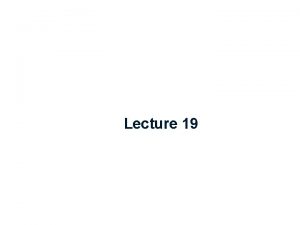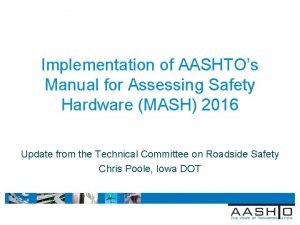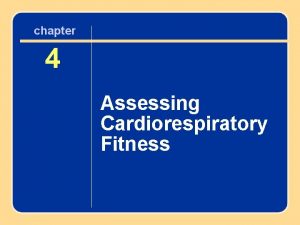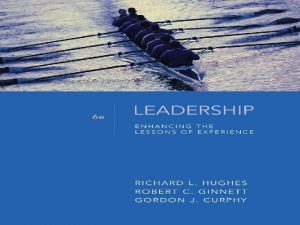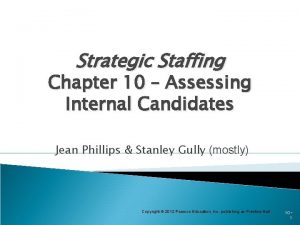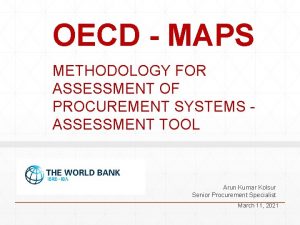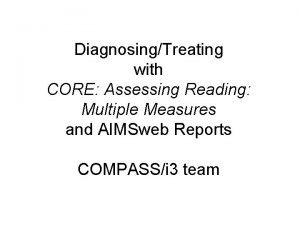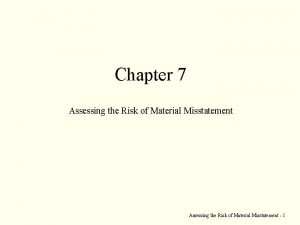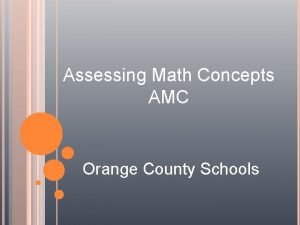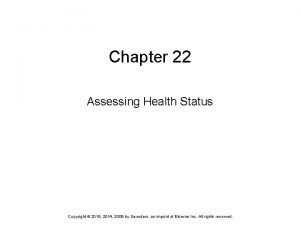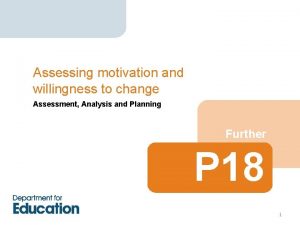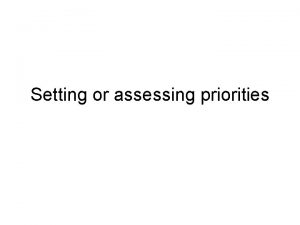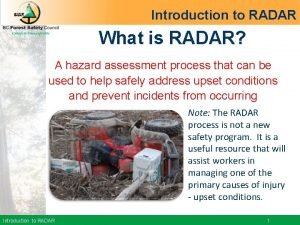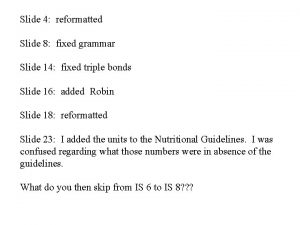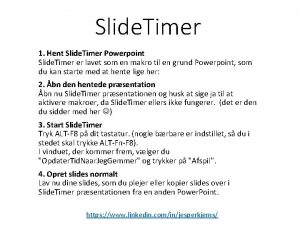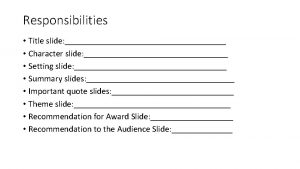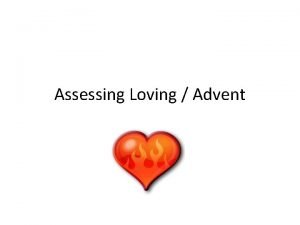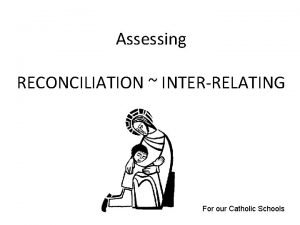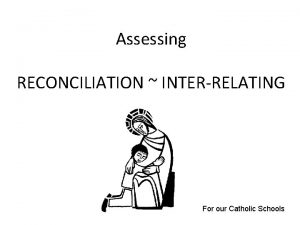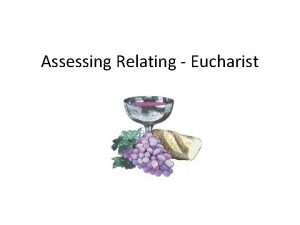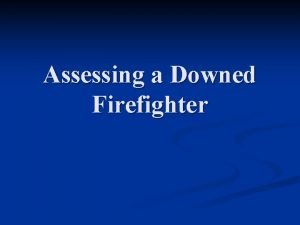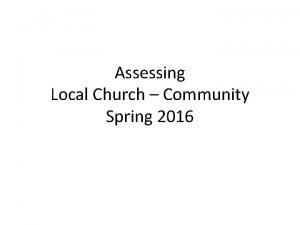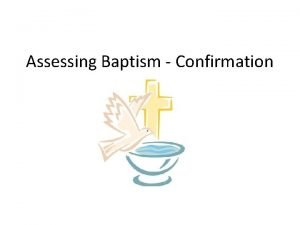Assessing Learning Module 25 Slide 1 Module 25


























- Slides: 26

Assessing Learning Module 25 Slide 1

Module 25 core objectives Be able to: 1 Demonstrate commitment to the concepts, content and policies of training within The Scout Association 2 Demonstrate acceptance of the Purpose, Principle and Method of The Scout Association 3 Undertake appropriate assessments and validations 4 Provide positive and constructive feedback 5 Identify any learning and development needs of the people you support 6 Plan to meet your own subject knowledge needs Slide 2

Training Adviser Role • Agrees Personal Learning Plan • Supports and encourages • Validates learning • Recommends Wood Badge – Subject to CTM approval • Note the Training Adviser does not deliver training Slide 3

Manager Role • Agrees and reviews role description • Ensures training is completed • Ensures appropriate permits are held • Understands process • Explain training commitment • Responsible for ongoing learning Slide 4

Nights Away Adviser Role • Supports and encourages adult through gaining permit • Assesses adults • Assists adult in gaining required learning • Recommends appropriate Permit • Advises on camping and residential experiences Slide 5

Activity Assessor Role • Assesses technical competence • Recommends permits for specific adventurous activities • Provides Support Slide 6

Scout Show Assessor Role • Assesses Scout Shows • Recommends national recognition Slide 7

Any Scouting assessor • Needs to understand the fundamentals of Scouting • Operate within The Scout Association’s: – Policies – Purpose – Principles – Method Slide 8

Policies Key policies of The Scout Association • • • Religious policy Equal opportunities Safety Child protection Anti-bullying Development Chapter 2 POR Slide 9

Purpose “The purpose of Scouting is to contribute to the development of young people in achieving their full physical, intellectual, social and spiritual potentials, as individuals, as responsible citizens and as members of their local, national and international communities. ” Chapter 1 POR Slide 10

Principles Members of The Scout Association have a duty to: – their God, – other people – and themselves. Every member who makes the promise undertakes to do their best. Slide 11

Method People participate in Scouting by: • enjoying what they are doing; • learning by doing; • participating in varied and progressive activities; • making choices for themselves; • taking responsibility for their own actions; • working in groups; • taking increasing responsibility for others; • taking part in activities outdoors; • sharing in prayer and worship; • making and living out their Promise. Chapter 1 POR Slide 12

Evidence • • • Slide 13 Demonstration Discussion Workbook Questionnaire External qualification Working documents Project Witness statement Video

Feedback • Constructive • Positive • Consider: – Venue – Body language – Position – Tone – Language • Give concrete areas to work on Slide 14

Communication Theory Decoding Encoding Message Feedback • Communication • “The transmission of information so that the recipient understands clearly what the sender intends” Slide 15

Problems in verbal communication – Not paying attention – Listening but not hearing – Thinking about what to say next – Interrupting – Hearing what one expects – Being defensive – Looking for disagreement Slide 16

Facts – We listen at 125 -250 wpm, we think at 1000 -3000 wpm – 75% of the time we are distracted, preoccupied or forgetful – 20% of the time, we remember what we hear – More than 35% of businesses think listening is a top skill for success Slide 17

Active listening § Avoid distractions § Don’t pre-conceive § Pay attention to the speaker § Don’t interrupt § Concentrate on what is being said Slide 18

Active listening § Listen for the whole message § Hear message before evaluating § Ask open questions to check understanding § Repeat back in your own words to convey understanding Slide 19

Questioning Open questions Focus Closed questions Understanding Slide 20

Communication Do we get the ratio right? Two ears and one mouth Slide 21

Active listening § Allows you to make sure you hear the words § and … § understand the meaning behind the words Slide 22

Questioning & Listening Process • Open ended questions: – What, how, who, where, why, when Listen for vagueness or significant remarks Probing questions Summary to check understanding Silence is a useful technique Slide 23

Questioning Avoid if possible – Interruptions – Multiple questions – Leading questions – Biased questions – Ambiguous questions Slide 24

Exercise • In threes: • Listener, Speaker, Observer • Subject: • “My career to date, its successes and failures” 1. 5 minutes active listening 2. 5 minutes feedback from observer on listener 3. Change round roles Slide 25

Active listening - Summary – Avoid distractions – Don’t pre-conceive – Pay attention to the speaker – Concentrate on what is being said – Don’t interrupt – Listen for the whole message – Hear message before evaluating – Ask open questions to check understanding – Repeat back in your own words to convey understanding Slide 26
 Heel and toe polka dance
Heel and toe polka dance Module 4 topic 5 turnabouts and parking
Module 4 topic 5 turnabouts and parking Module 4 topic 1 assessing and managing risk
Module 4 topic 1 assessing and managing risk Cuadro comparativo e-learning b-learning m-learning
Cuadro comparativo e-learning b-learning m-learning Factor x^2 - 25
Factor x^2 - 25 Assessing risk in sport regulatory bodies
Assessing risk in sport regulatory bodies Unit 18 assessing children's development support needs
Unit 18 assessing children's development support needs Assessing grammar effectively
Assessing grammar effectively Ppst domain 3
Ppst domain 3 Task analysis in hrd
Task analysis in hrd Benefits of informal assessment
Benefits of informal assessment Aashto manual for assessing safety hardware
Aashto manual for assessing safety hardware Cultural dynamics in assessing global markets
Cultural dynamics in assessing global markets Assessing a new venture's financial strength and viability
Assessing a new venture's financial strength and viability Assessing cardiorespiratory fitness
Assessing cardiorespiratory fitness Assessing leadership and measuring its effects
Assessing leadership and measuring its effects A nine box matrix requires assessing employees on ________.
A nine box matrix requires assessing employees on ________. Methodology for assessing procurement systems
Methodology for assessing procurement systems Core graded high frequency word survey
Core graded high frequency word survey While assessing the risks of material misstatement
While assessing the risks of material misstatement Amc math assessment
Amc math assessment Chapter 22 assessing health status
Chapter 22 assessing health status Assessing motivation to change
Assessing motivation to change Assessing opportunity cost involves
Assessing opportunity cost involves Assessing the situation
Assessing the situation Cultural dynamics in assessing global markets
Cultural dynamics in assessing global markets Assessing value for money
Assessing value for money









